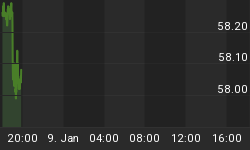Dark matter makes up roughly 80 percent of the universe. Or so the physicists say. We know – or think – dark matter exists because the galaxies stick together when there is not enough observable matter to keep them from flying apart.
But there is no direct evidence of dark matter. All experiments to “prove” dark matter exists have ended in failure.
Which brings us to the cryptocurrency universe, where observable evidence points to it being worth $100 billion. That’s apparently enough for some people to cry out “Bubble, bubble, we’re in trouble.”
But for a bubble to pop, you need three things:
1. “Something” to inflate the bubble with (I’ll give you a hint: money).
2. A pin (cataclysmic event)
3. Someplace for the money to go.
Let’s address each of these points in turn:
Where is the money coming from? Well it is not from major financial institutions in the Western world (U.S., UK and former colonies, and Europe). As anybody who has tried to fund their cryptocurrency exchange account in the spring and summer of 2017 knows, it is stunningly difficult and time-consuming.
Will it get better? No. We are heading into the dog-days of summer with major exchanges having run their staff into the ground for months now.
Or to put it more bluntly, Frank from the help desk doesn’t know where your wire went, and doesn’t care anymore, he just wants to hit the beach.
Plus, the exchanges have always been, and still are, terrified of drug-dealers, money-launderers, and general riff-raff. Show up with $100K in U.S. funds (let alone $1 million, let alone $10 million) and you are more likely to get your IP banned than to get a welcome message from the exchange manager.
And just how much “dark” money is out there? The Economist estimates the amount of offshore money in the world to be – ta da – 20 TRILLION dollars. Let’s repeat that: $20,000,000,000,000 hiding in offshore accounts earning how much in annual interest?
So if that $20 trillion ever finds a way to get past the cryptocurrency doormen, then the current $100 billion market-cap will be nothing more than a distant memory.
Now let’s talk about #2:
The Big Question is when will the balloon pop? And the answer is: the balloon has already popped. Many, many times…
On October 10, 1987, “Black Monday” the NYSE fell almost 23 percent in one day. Just this year, Bitcoin plunged 31 percent in January as the Chinese government did yet another clamp down on Bitcoin.
In October 2007, Dow Jones Industrial Average hit a high of 14,164.43. Less than 18 months later it was down 50 percent.
But that’s nothing compared to Bitcoin. Less than a year ago, in August 2016, Bitcoin crashed 47 percent. In 2013 it plunged more than 50 percent. Since 2011, when Bitcoin was worth less than $16, it has crashed every year.
How about Ethereum? Well it’s only been above $50 for less than 5 months.
In the foreseeable future there will be another Mt. Gox or another DAO hack or Exchange hacks or the U.S. treasury coming down hard Bitcoin. Crooks, thieves, swindlers are everywhere in the cryptocurrency world. And yet, cryptocurrency lives.
Finally, let’s talk about #3
If people want to sell cryptocurrency en masse, change it to fiat, and exit the exchanges, it’s every little bit as hard to get the money out as to put the money In. For sure the whales technically have no withdrawal limits. But a wholesale running for the exits will trigger an exchange shutdown. And everybody knows it.
But who is going to run?
People have been complaining about the bitcoin hoarding problem for years. That is to say, there are a large amount of people out there who treat bitcoins like stacks of gold bullion. These “true believers” didn’t sell when Bitcoin was $100, will they sell if Bitcoin drops from $3000 to $1000?
How about the gamblers? Do they really want give up their cryptocurrency gaming sites and head back to Vegas?
What about Ethereum? Repeat after me, Ether isn’t digital money, it’s a platform for building decentralized applications. What is that you say, completely befuddled? Ether is a coin that blockchain developers are learning to love. It’s a programming tool. Developers buy it so they can program it. Are they going to switch en masse to another platform because…..(fill in the blank).
Perhaps though we are focusing on the wrong element here. Let’s go back to the beginning of this essay.
On the one hand, we have “dark” money that we think totals $20 trillion dollars.
On the other hand, we have a banking/financial platform that is tailor-made for that $20 trillion dollars to have liquidity.
The “dark money” would be now able to move around the world with the anonymous click of the button, but is only held back by the inability of the cryptocurrency exchanges to process fiat deposits fast enough.
Why is this a bubble again?
By Ross Pilot via www.newcurrencyfrontier.com
















